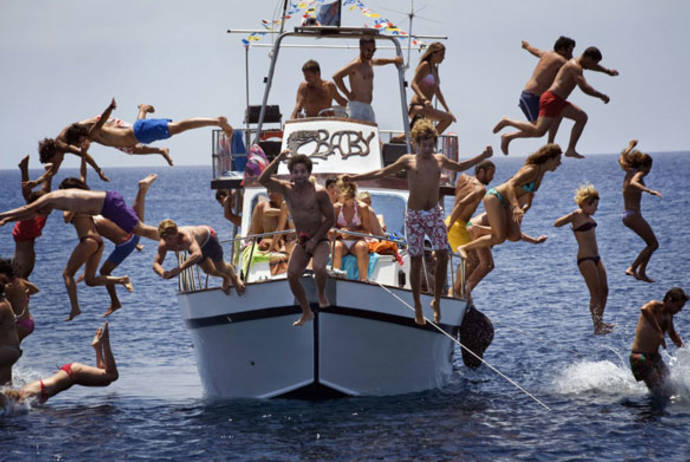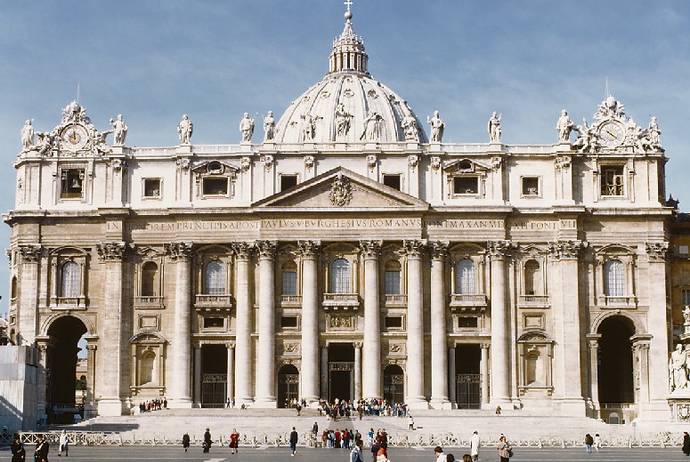The Film Society of Lincoln Center has announced the lineup for their annual showcase of Italian Cinema, Open Roads: New Italian Cinema, which will take place from June 8-14.
Open Roads: New Italian Cinema has been organized by The Film Society of Lincoln Center together with Istituto Luce-Cinecittà-Filmitalia and the support of Ministero per i Beni e le Attivitá Culturali (Direzione Generale per il Cinema) in collaboration with the Italian Cultural Institute of New York, the Alexander Bodini Foundation, Casa Italiana Zerilli-Marimó and Antonio Monda.
This year’s lineup includes impressive debuts, a return of favorite filmmakers as well as several award winners including Terraferma by Emanuele Crialese, Special Jury Prize winner at the 2011 Venice Film Festival and La-Bas: A Criminal Education by Guido Lombardi, Winner of “Lion of the Future” award at the 2011 Venice Film Festival. A diverse selection of titles also includes comedies such as A Flat for Three by Carlo Verdone, Escort in Love by Massimiliano Bruno, and the return of genre cinema with The Legend of Kaspar Hauser by Davide Manuli starring Vincent Gallo and The Arrival of Wang by Antonio & Marco Manetti. The 2012 lineup expertly showcases the fact that today’s young Italian filmmakers are embracing classic storytelling and breathing new life into them.
“The range of work on display in this year's Open Roads is truly remarkable,” Film Society of Lincoln Center Program Director, Richard Peña stated, “Everywhere one looks, Italian filmmakers are venturing off into exciting new directions, tipping their hats to their country's great film tradition while telling surprising new stories in astonishingly new ways.”
The series will feature directorial debuts by two of Italy’s finest screenwriters, Francesco Bruni whose debut Easy! was voted best film in the “Controcampo Italiano” section of last year’s Venice Film Festival and Ivan Cotroneo’s comedic turn in the director’s chair with Kryptonite. Other debuts include filmmaker Pippo Mezzapesa’s Annalisa and the debut feature by the De Serio brothers, Gianluca and Massimliano, titled Seven Acts of Mercy and features astonishing performances by lead veteran actor Robert Herlitzka and newcomer Olimpia Melinte.
Such masters as Ermanno Olmi will return this year with The Cardboard Village, a striking parable about the defense of faith in a world posed to deny it; the new film by Ferzan Ozpetek, Magnificent Presence, inspired bv 1961 Italian comedy directed by Antonio Pietrangeli’s Ghosts of Rome and has been brilliantly updated; and one of Italy’s most popular contemporary filmmakers Carlo Verdone, who has returned to the screen with a kind of Odd Couple for the new millennium titled A Flat for Three.
Another highlight this year includes winner of Best Documentary at the 2011 Golden Globe awards in Italy, Gianfranco Giagni’s film Dante Ferretti: Italian Production Designer. A tribute to one of the greatest artists working today, winner of three Oscars (most recently for the extraordinary look of Hugo) and a key, longtime collaborator of directors ranging from Fellini and Pasolini to Terry Gilliam, Tim Burton and Martin Scorsese.
FILMS, DESCRIPTIONS & SCHEDULE
Annalisa
Pippo Mezzapesa, 2011, Italy; 82m
Another standout in a year of several impressive Italian feature film debuts, Annalisa follows the exploits of two young men from Apulia who, judging from their own parents’ lives, don’t seem to have too many auspicious prospects. Mezzapesa brilliantly captures the rhythm of teenage time: events occur unpredictably, haphazardly, with great attention paid to providing the texture and atmosphere of these young lives.
WED, JUN 13, 8:15PM. Director Pippo Mezzapesa in-person!
The Arrival of Wang
Antonio & Marco Manetti, 2011, Italy; 80m
A respected Chinese interpreter, Gaia, receives an intriguing if somewhat mysterious phone call from an old client: they need her services as soon as possible, although they can’t say much about the job for which they’re hiring her. The dialog is razor-sharp, and the action moves briskly; just as we become certain that we understand what’s truly happening, brother directors Antonio and Marco Manetti come along and pull the rug out from under our feet, sending us back to square one.
SUN. JUN 10, 7:50PM, Directors Antonio & Marco Manetti in person! WED. JUN 13, 4:15PM
The Cardboard Village
Ermanno Olmi, 2011, Italy; 87m
An old church is scheduled for demolition: the paintings have been taken off the walls, the sacred objects put away, and a giant, mechanical arm starts to take down the life-size crucifix that hangs over the altar. Yet, despite seeing the destruction of a place in which he has devoted so much of his life, the old priest feels a certain joy. Olmi starts with a philosophical or spiritual theme and then fashions a story that gives these themes a powerful, very contemporary relevance.
FRI. JUN 8, 4PM; TUES. JUN 12, 8:50PM
Dante Ferretti: Italian Production Designer
Gianfranco Giagni, 2010, Italy; 52m
A loving, insightful tribute to one of the greatest artists working in cinema today: Dante Ferretti. Ferretti discusses his art, taking us to those places that have inspired his designs as well as sharing and explains his sketches and models. Those interviewed for the film include Leonardo DiCaprio, Terry Gilliam, Giuseppe Tornatore and Martin Scorsese.
SAT. JUN 9, 5:30PM. Attendance still has to be confirmed.
Diaz: Don’t Clean Up This Blood
Daniele Vicari, 2012, Italy/Romania/France; 127m
This film is the searing rendition of the events surrounding the horrifying and still controversial police raid at the Diaz Pascoli School in Genoa during the 2001 G8 Summit. The summit was drawing to an end; although there had been numerous clashes between the police and the many protesters who had descended upon the city, things had been calm for hours. Around midnight, dozens of uniformed police officers arrived at Diaz, a temporary shelter for the many international protesters, as well as a site for various social forums. For the next two hours, the police moved down its hallways, indiscriminately attacking everyone they could find, sending dozens off to the hospital or a detention center.
FRI. JUN 8, 9PM. Direcor Daniele Vicari in person!
Easy!
Francesco Bruni, 2011, Italy; 95m
By turns hilarious and heartbreaking, Easy chronicles one man’s unusual path to growing up. Bruno, a formerly talented writer who now ghostwrites celebrity autobiographies, also gives boring, listless private lessons to bored, listless students. One day he finds out he is the father of one of his students. It is now time to do some parenting.
FRI. JUN 8, 1:45PM; SAT. JUNE 9, 7:30PM. Director Francesco Bruni in person at June 9 screening!
Escort in Love
Massimiliano Bruno, 2011, Italy; 95m
Alice lives a phenomenally pampered life. Then one day, her somewhat shady husband is killed in a car accident, and Alice learns the horrible truth: the family is completely broke, all the opulence based on dubious loans tinged with some underworld connections. Alice must find a way to support herself and her son, but she’s a bit lacking in the marketable skills department, until she discovers the wonderful world of escort services. In the best tradition of Italian comedy, Escort in Love offers pointed political criticism in between its explosions of laughter.
SUN. JUN 10, NOON. Actress Paola Cortellesi in person!
A FLAT FOR THREE
Carlo Verdone, 2012, Italy; 119m
Three divorced men who decide to share an apartment together in Rome. All three are drifting towards uncertain futures while still stuck in unresolved pasts. One (Verdone) is a record collector lost in a world of classic rock; another (Pier Francesco Favino) is a former film critic reduced to writing gossip columns. The last (Marco Giallini) tries to sell real estate as kind of excuse to meet women. Clearly a response to the economic and spiritual crisis gripping Italy, A Flat for Three is one of Verdone’s most sharply observed comedies.
SUN. JUN 10, 5PM; MON. JUN 11, 1:30PM. Attendance still has to be confirmed.
Horses
Michele Rho, 2011, Italy; 120m
Two brothers, Alessandro and Pietro, live in a small village in the Apennines at the end of the 19th century. When their mother dies, she leaves them with a magnificent bequest: two beautiful horses, from which they can make their livings. Several years later, the brothers are still close, yet it’s clear that each is increasingly eager to pursue his own, very separate dreams. The film doesn’t feel mechanical or predictable: even when we can feel the hand of fate in the lives of these characters, we know that at any second the action can hurtle into another direction.
MON. JUN 11, 8:30PM, Director Michele Rho in person! TUES. JUN 12, 1:30PM
Kryptonite!
Ivan Cotroneo, 2011, Italy; 99m
Bittersweet comedy about a large, colorful Neapolitan family struggling against both changing times and internal tensions. Set in the seventies, the world is evolving all around these characters, and their anxiety and even befuddlement with this new world is always shown with sympathy—even when it’s laced with humor.
MON. JUN 11, 6:15PM, Director Ivan Cotroneo in-person! THURS. JUN 14, 1PM
Là-bas: A Criminal Education
Guido Lombardi, 2011, Italy; 100m
“Down there,” in French “là-bas,” for many Africans is simply a password for Europe, the place that has attracted so many of them in the past decades. One of those caught in web is Yusouf, a talented young artist promised a job by an uncle already established in Italy. Unable at first to find his uncle, Yusouf makes his way to Castel Volturno, about 18 miles from Naples and home to about 20,000 African immigrants, the vast majority clandestine. Discovering the various legal, semi-legal and outright illegal ways these people struggle on day by day, Yusouf also gets to witness the role of the Camorra, Naples’ deadly version of the Mafia, in their use and exploitation.
SUN. JUN 10, 10PM
The Legend of Kaspar Hauser
Davide Manuli, 2012, Italy;90m
The film riffs on the famous European legend about Kaspar Houser, the mysterious, “wild boy” who simply appeared on the streets of Nuremberg in 1828. Shot in luscious black-and-white, the film follows this updated Kaspar after he washes up on the beach of an almost deserted Mediterranean island, clad in a track suit and sporting an iPod.
SAT. JUN 9, 10PM. Director Davide Manuli in person!
Magnificent Presence
Ferzan Ozpetek, 2012, Italy; 105m
This is the story of Pietro, an aspiring actor approaching 30 who’s just moved to Rome. After crashing with a cousin for a while, Pietro finds his own place, a rather extraordinary apartment offered for an extremely reasonable price. Pietro moves in, but begins to notice that each night when he returns some of his things have been moved. It soon becomes clear to him: Pietro is not living alone.
FRI. JUN 8, 6:15PM, Director Ferzan Ozpetek in person! MON. JUN 11, 4PM
My Tomorrow
Marina Spada, 2011, Italy; 88m
As she stands before audiences giving her motivational lectures, human resources manager Monica is the very portrait of success. Yet there is something that simply doesn’t feel quite right. Director and co-writer Marina Spada creates a terrifically rich character study that avoids clichés. Spada also offers a fascinating look at Milan, a very different kind of Italy that rarely makes it into the movies.
SAT. JUN 9, 3PM. Director Marina Spada in person!
Seven Acts of Mercy
Gianluca and Massimliano De Serio, 2011, Italy/Romania; 103m
One of Cravaggio’s greatest masterworks depicts all seven Christian acts of mercy (feeding the hungry, clothing the naked, etc.) in one magnificent painting; the debut feature of the De Serio brothers depicts a re-imagining of these acts in the contemporary relationship between an old man and a desperate young woman.
SUN. JUN 10, 2:30PM, Directors Gianluca and Massimliano De Serio in person! TUES. JUN 12, 4PM
Shun Li and the Poet
Andrea Segre, 2011, Italy/France; 96m
Brought to Italy by a “broker” who she’s slowly paying off while saving money to bring across her son, Shun Li is sent from her factory job to a bar in Chioggia, a small island in the Veneto lagoon. There she strikes up a friendship with Bepi, a fisherman nicknamed “the Poet,” himself a representative of an earlier immigration to Italy from Eastern Europe. The two come to share a special understanding between them, and their relationship transforms them both.
SAT. JUN 9, 12:30PM. Director Andrea Segre in person!
Terraferma
Emanuele Crialese, 2011, Italy/France; 88m
Filippo, whose own father was lost at sea years ago, lives with his mother and grandfather on a small island off the coast of Sicily. Still untouched by tourism, the island faces a challenge from the dozens of clandestine immigrants who each week try to make the island their launch pad for getting to Italy.
*WED. JUN 13, 2:30PM & 6:15PM
All screenings will be held at the Film Society of Lincoln Center's Walter Reade Theater, located at 165 West 65th Street, between Amsterdam Avenue and Broadway.





































